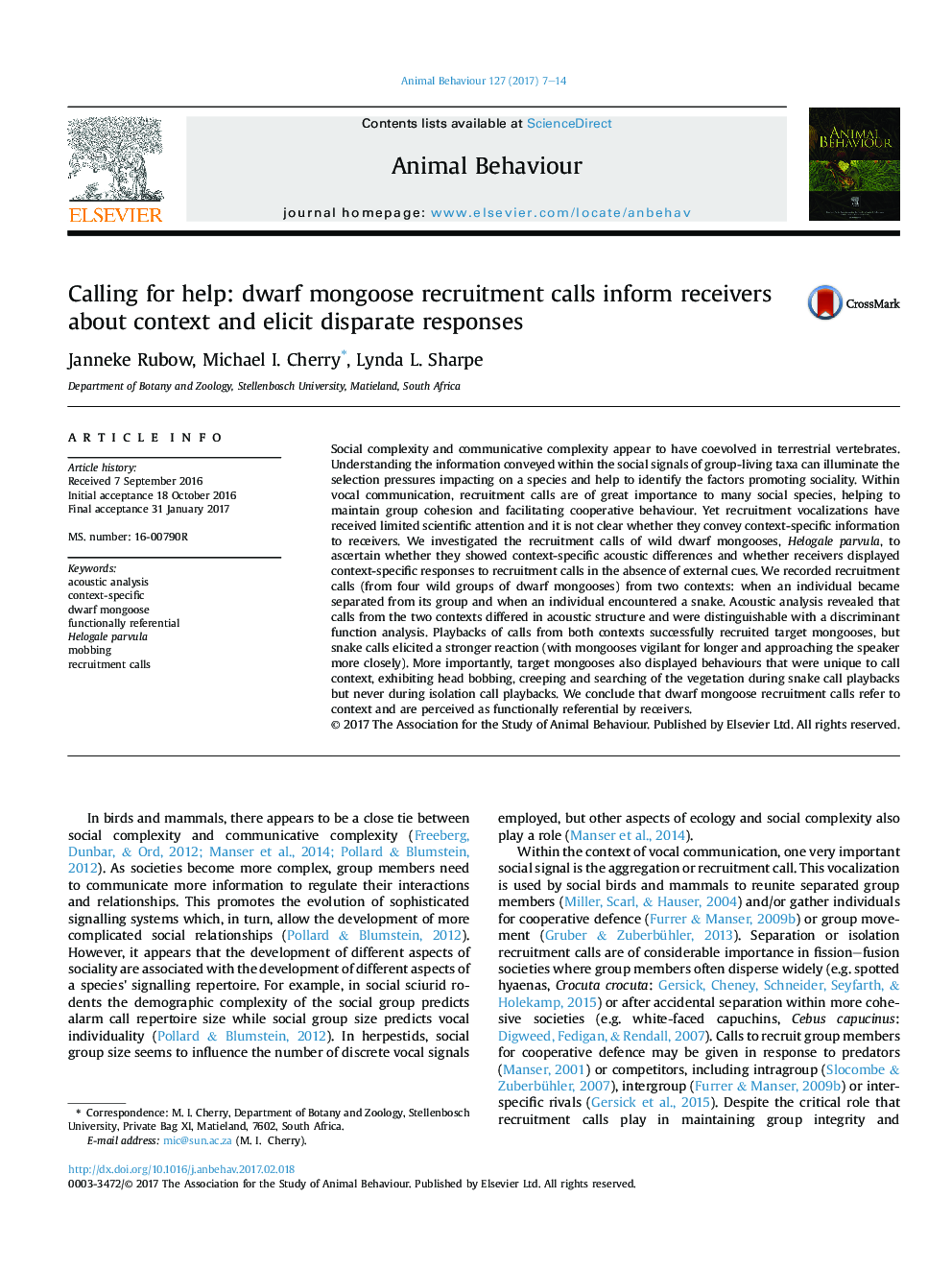| Article ID | Journal | Published Year | Pages | File Type |
|---|---|---|---|---|
| 5538332 | Animal Behaviour | 2017 | 8 Pages |
Abstract
Social complexity and communicative complexity appear to have coevolved in terrestrial vertebrates. Understanding the information conveyed within the social signals of group-living taxa can illuminate the selection pressures impacting on a species and help to identify the factors promoting sociality. Within vocal communication, recruitment calls are of great importance to many social species, helping to maintain group cohesion and facilitating cooperative behaviour. Yet recruitment vocalizations have received limited scientific attention and it is not clear whether they convey context-specific information to receivers. We investigated the recruitment calls of wild dwarf mongooses, Helogale parvula, to ascertain whether they showed context-specific acoustic differences and whether receivers displayed context-specific responses to recruitment calls in the absence of external cues. We recorded recruitment calls (from four wild groups of dwarf mongooses) from two contexts: when an individual became separated from its group and when an individual encountered a snake. Acoustic analysis revealed that calls from the two contexts differed in acoustic structure and were distinguishable with a discriminant function analysis. Playbacks of calls from both contexts successfully recruited target mongooses, but snake calls elicited a stronger reaction (with mongooses vigilant for longer and approaching the speaker more closely). More importantly, target mongooses also displayed behaviours that were unique to call context, exhibiting head bobbing, creeping and searching of the vegetation during snake call playbacks but never during isolation call playbacks. We conclude that dwarf mongoose recruitment calls refer to context and are perceived as functionally referential by receivers.
Related Topics
Life Sciences
Agricultural and Biological Sciences
Animal Science and Zoology
Authors
Janneke Rubow, Michael I. Cherry, Lynda L. Sharpe,
